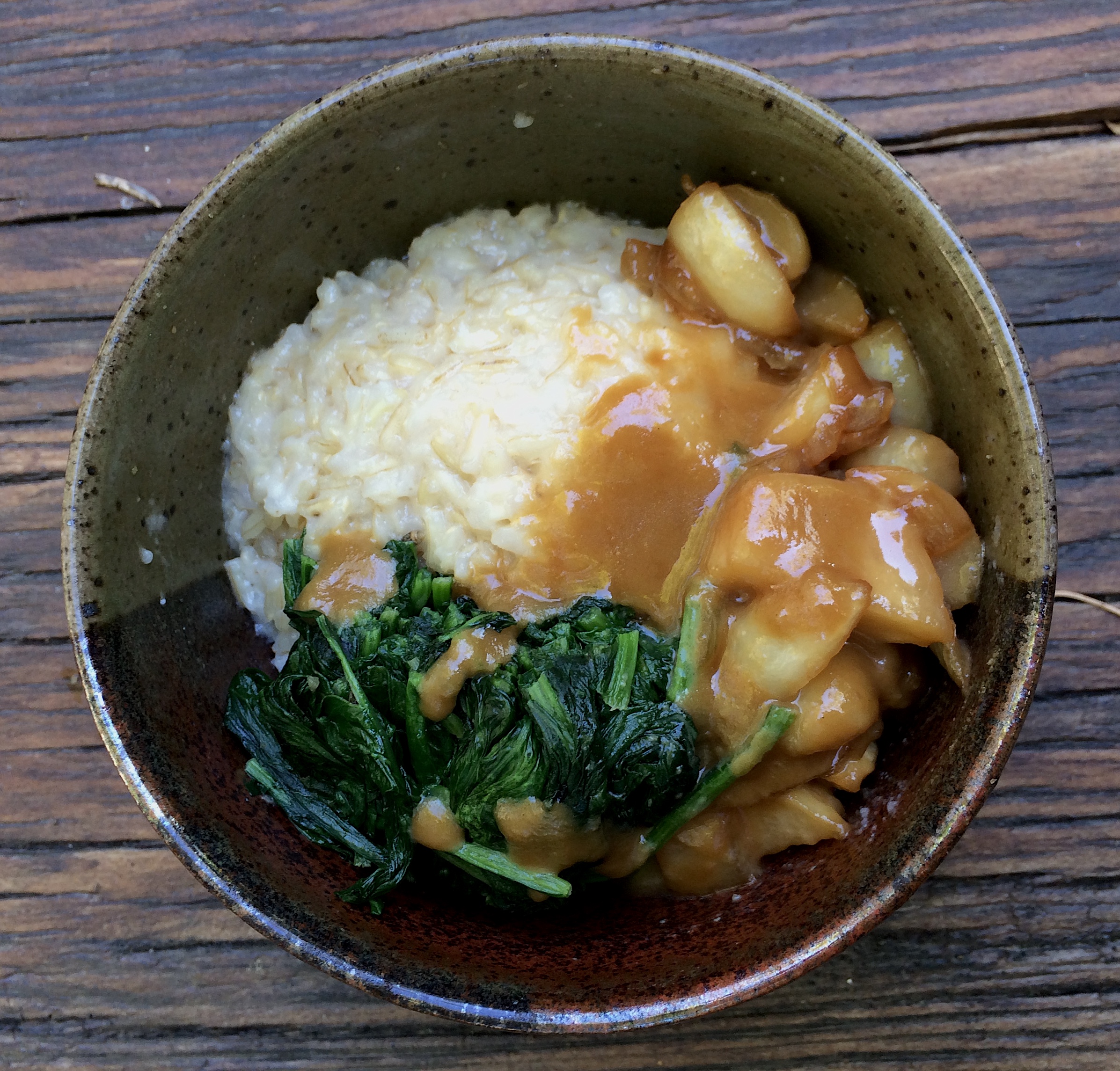Radishes
purple daikon
So radishes are a thing of debate around Carriage House Farm. The staff is more or less evenly divided between diametrically opposing viewpoints on this crunchy, funky, spicy root vegetable. We either hate it or love it. There doesn’t seem to be any middle ground. (The person writing this post, is in the “hate it” camp. Just FYI).
The people who love radishes (crazies, every one of them) will eat the seconds as soon as they’re washed off in the garden, and then follow up later by dipping sliced bits of radish in salt to snack on or adding them to a fresh green salad for their bright color and spicy taste. We’ve heard tell of them also just sautéing the small ones, thinly sliced, in good quality butter with a dash of sea salt.
Those at CHF who dislike their taste raw, luckily, are the people most often responsible for creating and sharing recipes on the site—and so their challenge is finding ways to transform radishes into dishes that preserve their photogenic beauty (which I DO love, especially in the spring when nearly everything we’re harvesting is green green green) while rerouting their taste into something we can heartily enjoy. So far, we’ve had great success pickling, adding them to slaw, and roasting them with other root vegetables.
Here are a few other suggestions for using radishes:
Add thin radish slices to sandwiches.
Make a simple radish dip by pulsing 1/2 cup of Greek yogurt or sour cream, 1/4 cup chopped radishes, one minced garlic clove, and a splash of MadHouse red wine vinegar in a food processor until smooth.
Add crunch and spice to tuna salad or chicken salad by adding 1 to 2 teaspoons of chopped radishes.
Use radishes as crudité for dips.
Pair them in a salad with apples and cheese. Apples and radishes love each other and radishes and blue cheese are pretty tasty together.
Handling radishes:
We plant a lot of radishes, especially in the fall, because radishes store so well. They can last well into the winter in a good root cellar right alongside carrots and potatoes. But also these last well in the fridge. These aren’t the kind of produce you buy at a farmer’s market that you have to eat right away or within a few days before their ephemeral tastiness becomes overripe and spoils. So, that’s another point in favor of the radish.
When you get them home, DO separate the greens from the colorful root and store them in separate containers. If left intact, the leaves can continue to pull nutrients from the roots, robbing them of flavor and crunchiness.
DON’T get rid of the greens. They’re thick and a little furry, but if washed and chopped and braised or treated as you might collard greens, they’re great mixed into potato hashes or make a great accompaniment to BBQ or fried chicken (especially if cooked with garlic, vinegar, bacon).
Nutritional Value
Radishes are a good source of fiber and they contain small amounts of potassium, folate, riboflavin, niacin ,vitamin B-6, calcium, magnesium, zinc, phosphorous, copper, manganese, and sodium.
Also, fun fact, there is an entire holiday in Oaxaca, Mexico devoted to the radish: Noches De Los Rabanos. No lie. And we celebrate it here at Carriage House. Check out how we honored the radish for Noches De Los Rabanos last year.















